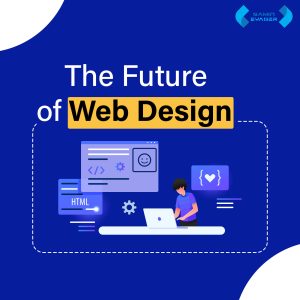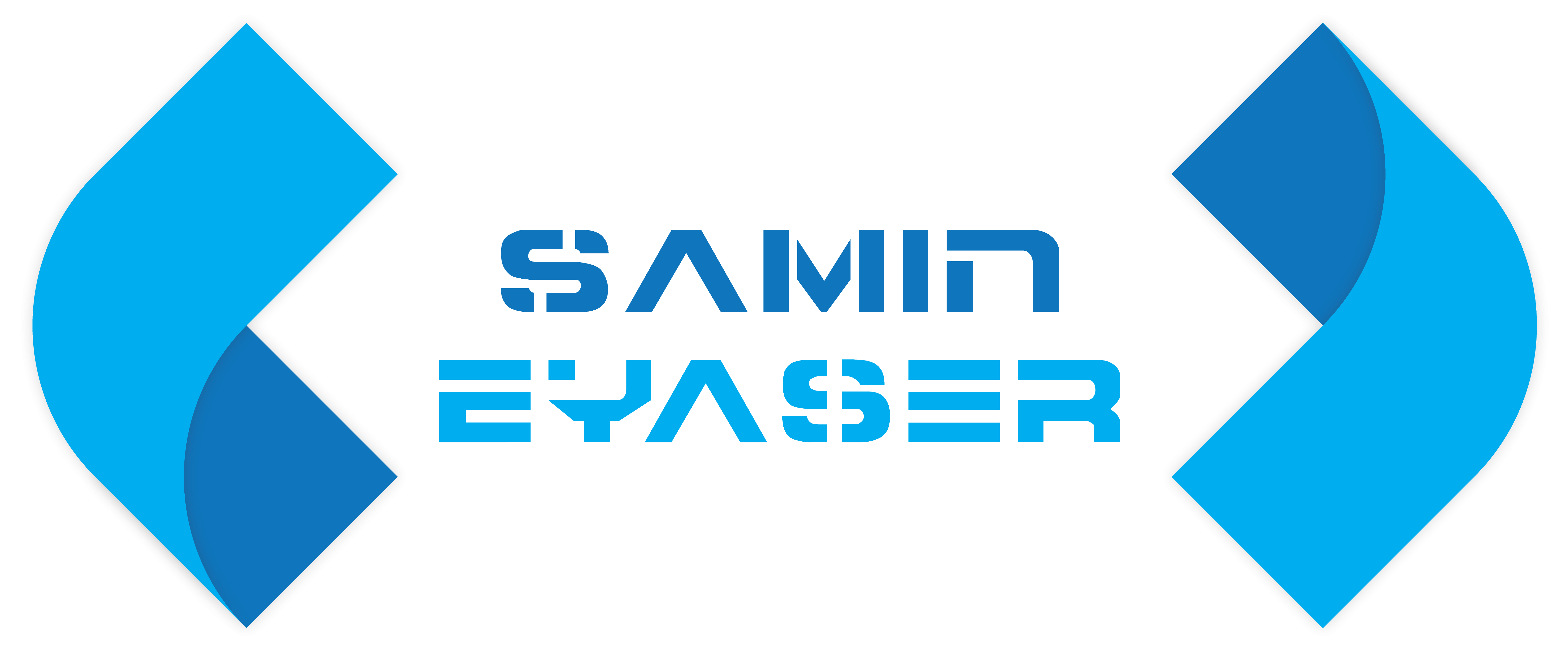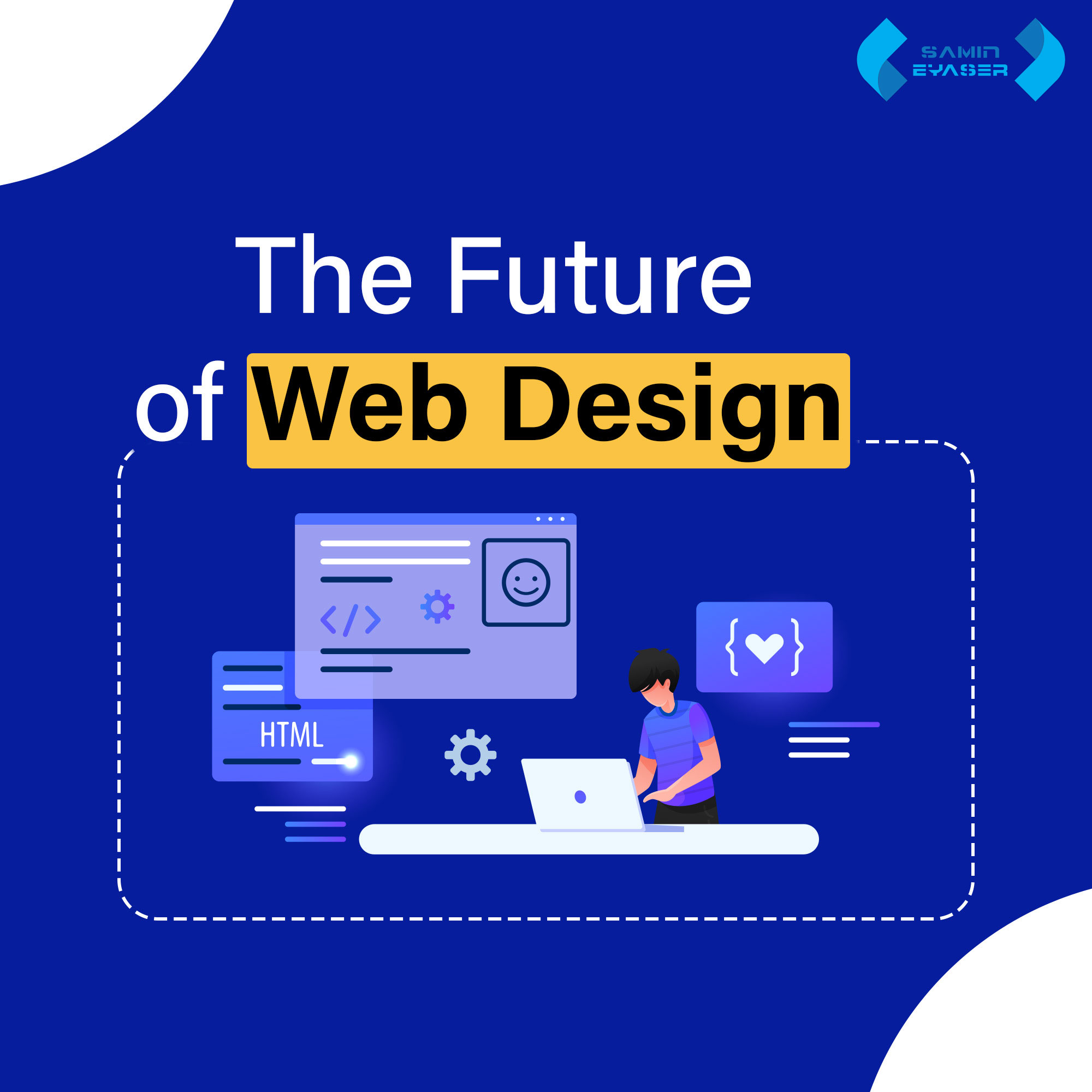
The Future of Web Design
Since the earliest days of the Internet, web design has advanced significantly. From simple HTML pages with basic layouts to the dynamic and visually stunning websites we see today, the evolution of web design has been nothing short of remarkable. In this article, we’ll take a deep dive into the future of design, exploring the latest trends and technologies that are shaping the way websites are created and experienced.
The Evolution of Design: A Brief History
To understand where design is headed, it’s essential to look back at its journey. The web design landscape has seen significant shifts over the years, from static web pages to the rise of responsive design. Let’s take a trip down memory lane and explore the milestones in web design evolution
Static HTML Pages: The Dawn of the Web
In the early days, web design consisted of static HTML pages. These pages were rudimentary, often lacking in visual appeal, and had limited functionality. It was a time when simply having a presence on the web was a novelty
The Rise of CSS: Adding Style to the Web
With the introduction of Cascading Style Sheets (CSS), designers gained the ability to separate content from presentation. This marked a significant shift, as websites could now have more structured layouts and consistent styling.
Flash Animation Era: A Visual Revolution
The Flash animation era brought a new level of interactivity and visual appeal to websites. Flash-based websites were visually stunning, but they came with significant drawbacks, including longer loading times and accessibility issues
Mobile-First and Responsive Design: Adapting to the Changing Landscape
As mobile devices became more prominent, designers had to adapt. Mobile-first and responsive design principles emerged, focusing on creating websites that functioned seamlessly on a variety of screen sizes.
Flat Design: A Minimalist Approach
Flat design, with its clean lines and simple graphics, became a popular trend. This design style prioritized simplicity and clarity, making it easier for users to navigate websites.
Parallax Scrolling and Storytelling: Creating Immersive Experiences
Web designers began using parallax scrolling and storytelling techniques to create immersive experiences for users. These techniques added depth and engagement to web pages.
The Current State of Web Design
Before we delve into the future, it’s crucial to understand the current state of design. The contemporary web landscape is a rich tapestry of various design trends and technologies. Let’s take a look at what’s happening right now.
Minimalism and White Space
Minimalism is still a prevalent design trend, focusing on clean and uncluttered layouts. White space is used strategically to guide users’ attention and provide a sense of elegance.
Dark Mode
Dark mode has gained popularity for its aesthetic appeal and potential energy-saving benefits on OLED screens. It’s now a common feature on websites and apps.
Microinteractions
Microinteractions are subtle animations and feedback elements that enhance user engagement. They can be found in various forms, such as buttons that change color when hovered over.
Web Accessibility
layout designers are paying more attention to making websites accessible to all users, including those with disabilities. This trend ensures that web content is available to everyone, regardless of their abilities.
AI-Powered Design Tools
Artificial intelligence is being used in Online layout to automate repetitive tasks, analyze user behavior, and provide personalized content. This trend enhances user experiences and simplifies design processes.
The Future of Web Design
As we look to the future, it’s evident that web design will continue to evolve, driven by technological advancements and changing user expectations. Here are some key trends and innovations that will shape the future of web design.
1. Augmented Reality (AR) Integration
AR will become a fundamental part of web design. Users will interact with websites in new and exciting ways, from trying on virtual clothes to exploring 3D models of products.
2. Voice User Interfaces (VUI)
With the rise of voice-controlled devices, VUI will play a more significant role in web design. Websites will need to adapt to voice searches and provide voice-guided navigation.
3. Progressive Web Apps (PWAs)
PWAs provide an experience similar to an app in a web browser. They operate offline, load rapidly, and offer a flawless user experience. This trend will become more prevalent.
4. 3D and Immersive Design
Web designers will increasingly use 3D elements and immersive design to create captivating and memorable experiences. Think of websites as virtual environments you can explore.
5. Advanced Animation and Interaction
Animation and interaction will become more advanced and personalized. Users will enjoy dynamic, responsive, and context-aware web content.
6. Data-Driven Personalization
Web design will leverage user data to provide highly personalized content and experiences. Websites will adapt to individual preferences and behaviors in real-time.
7. Blockchain for Trust and Security
Blockchain technology will enhance trust and security in online transactions, making e-commerce websites more reliable and transparent.
8. Sustainability and Green Web Design
The future of web design will also prioritize sustainability. Designers will focus on reducing the environmental footprint of websites, optimizing energy use, and minimizing digital waste.
9. Quantum Computing and Speed
As quantum computing becomes more accessible, websites will load almost instantly, offering unprecedented speed and efficiency.
10. Emotional Design
Web designers will harness the power of emotional design to create websites that evoke specific emotions and establish stronger connections with users.
11. Biometric Authentication
Biometric authentication, such as fingerprint or facial recognition, will enhance website security and streamline login processes.
12. Cross-Device Consistency
Web design will place a greater emphasis on ensuring a consistent user experience across various devices, including smartphones, tablets, and desktops.
In Conclusion
The landscape of web design is dynamic and intriguing for the future. As technology advances and user expectations change, web designers will continue to push the boundaries of creativity and innovation. From AR integration to 3D experiences and data-driven personalization, the possibilities are limitless. The web is poised to become more immersive, accessible, and sustainable, offering users a richer and more engaging online experience.
Frequently Asked Questions (FAQs)
1. What is the role of AI in the future of web design?
AI will play a crucial role in automating design tasks, personalizing content, and analyzing user behavior to enhance the user experience.
2. How will web design adapt to the growing trend of voice-controlled devices?
Web designers will need to optimize websites for voice searches and offer voice-guided navigation, ensuring a seamless experience for users.
3. What are Progressive Web Apps (PWAs), and why are they important for the future of web design?
PWAs are web applications that offer an app-like experience within a web browser. They load quickly, work offline, and provide a seamless user experience, making them essential for the future of web design.
4. How can web design contribute to sustainability and environmental responsibility?
Web designers can reduce the environmental footprint of websites by optimizing energy use, minimizing digital waste, and adopting sustainable design practices.
Thanks For visited our website

